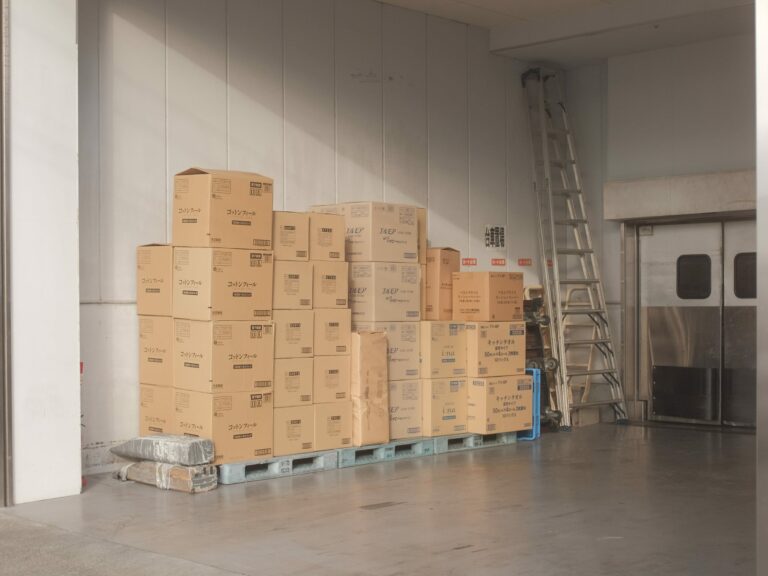Sitting on a mountain of stuff that you need out of the way? Maybe you’ve already looked at storage options but you’re still none the wiser. We get it! Getting started can be overwhelming. But don’t worry…
We’re here to help you pick the type of storage unit that suits your stuff best!
To get you on the right trail, we’ll compare indoor and outdoor storage units by looking at:
- The features of indoor and outdoor storage
- What you can store in them
- And the pros and cons of each
Features of indoor storage units
Indoor units are located in buildings that can be either single or multi-story premises. Large elevators give convenient access for you to transport your belongings to upper levels. Buildings are secured by unique access code entry. Individual storage units are usually fitted with alarms and protected by 24-hour surveillance cameras. Some indoor facilities also include drive up units in first floor areas.
What can you store inside?
Indoor storage facilities come in many different sizes. Our inventory includes storage units that are the same size as small closets and large bedrooms. Here’s some of the things you can put in them:
- Books, paintings and photo collections
- Small to medium sized furniture pieces; chairs, stools, desk seats, small office desks, drawers and filing cabinets
- Electronics and appliances like refrigerators, televisions, washing machines and tumble dryers
- Large pieces of furniture from dining room tables and chairs to three piece sofa sets
Features of outdoor storage units
Outdoor storage units are similar in size to garages. They offer plenty of space and drive up access. They are often enclosed behind locked gates. Storage companies (like us!) also increase security with 24-hour surveillance cameras.
What can you store outside?
You can store a wide variety of things in an outdoor storage facility. Their large spaces can accommodate:
- Vehicles such as cars, RVs, trucks and trailers
- Watercraft like boats, jet-skis, canoes and kayaks
- Other recreational vehicles: motorbikes, quad bikes, buggies and scooters
- Gardening equipment including ride-on mowers, lawnmowers, wheelbarrows and tools
- Plus, outdoor and seasonal furniture
Indoor vs Outdoor Storage Units
Okay, so now you’ve got some idea of what you can store in each, it’s time for us to look at the pros and cons of indoor and outdoor storage units. We’ve broken them down into five important categories:
Access & Convenience
Indoor Pros
- Boasts better lighting
- Elevators available for convenient access to upper levels
- Moving carts provided for easy transport of belonging
Indoor Cons
- Access to indoor storage facilities take longer as opposed to quicker access to drive up units
- Navigating large, awkwardly shaped belongings in corridors may be difficult
Outdoor Pros
- Instant access to drive up units
- Ideal for regular access to load and unload items.
- Quick and easy access cuts out having to lug items upstairs or down narrow corridors
Outdoor Cons
- Poor lighting can make collecting and storing items at night quite difficult
Security & Protection
Indoor Pros
- More privacy
- More security steps in place; for example code entry doors
- Protection from pests
- Climate controlled options provide protection from elements, allowing you to store special items like: wine and spirits, antiques and family heirlooms
Outdoor Pros
- Gated and locked enclosures
- 24-hour surveillance
- Secure metal units
Outdoor Cons
- Less privacy
- Lack of climate controlled storage options
Space & Sizes
Indoor Pros
- Lots of unit sizes varying from 5’ x 5’ up to 10’ x 30’
Indoor Cons
- Additional features such as climate-controlled storage are limited to certain sizes
- Indoor facilities that accommodate larger units are harder to come by
Outdoor Pros
- Larger units offer more space for bigger item storage
- Lots of availability
- Can store many items of all shapes and sizes
Short Term & Long Term
Indoor Pros
- Better protection and climate control options allow for long term storage of delicate items
- Increased security reassures renters that important documents and items are secured for the whole duration of storage, whether that be on a short or long term basis
Indoor Cons
- Limited access may make short term storage of large amounts of items inconvenient
Outdoor Pros
- Flexible renting terms means vehicles can be stored for as long as required
- Ideal for storing larger pieces of furniture or even entire rooms whilst moving or decorating
Outdoor Cons
- Vehicles, large furniture and electronics require additional protective measures whilst in long term storage
Budget & Affordability
Indoor Pros
- Indoor facilities in urban areas are generally a little cheaper
Indoor Cons
- Costs can quickly add up when additional services are added
Outdoor Pros
- Generally more affordable in rural areas
Outdoor Cons
- Higher rates in urban areas where space is limited
Indoor vs Outdoor Storage Units: Which is Best?
If you’re still unsure which type of storage unit is best for you, simply list our five categories with the most important one for you at the top. Then work your way down, based on what you need until you reach an answer.
Still unsure?
Contact us! Our helpful and friendly team is always on hand to help you out.

